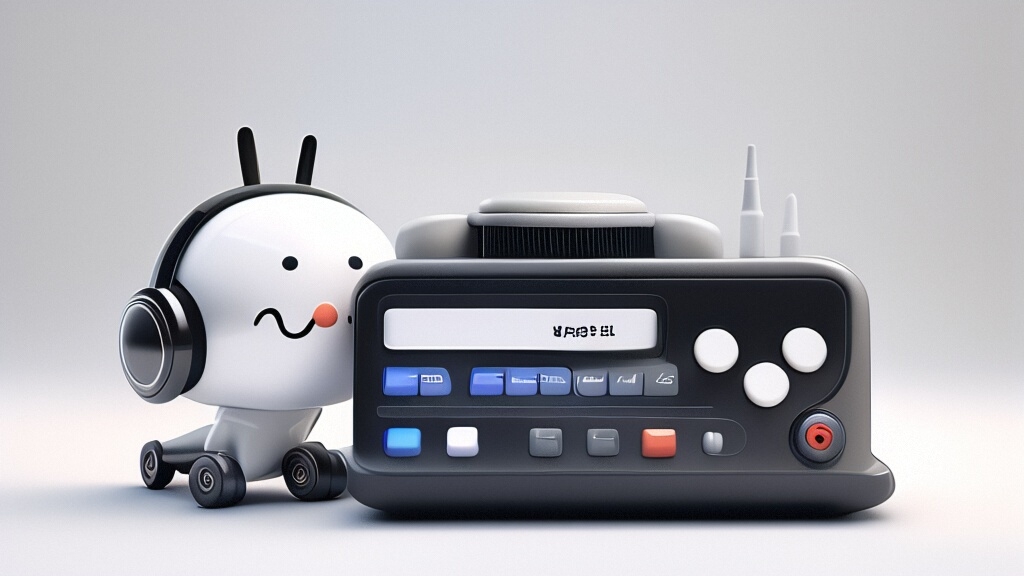🔥关注墨瑾轩,带你探索编程的奥秘!🚀
🔥超萌技术攻略,轻松晋级编程高手🚀
🔥技术宝库已备好,就等你来挖掘🚀
🔥订阅墨瑾轩,智趣学习不孤单🚀
🔥即刻启航,编程之旅更有趣🚀


一、第一步:环境搭建——给移动APP装上“性能仪表盘”
目标:用Android Studio和MVVM模式搭建测试环境,像搭积木一样设计界面。
步骤:
-
创建Android项目:
- 在Android Studio中选择“Empty Activity”,勾选“Use Kotlin”(或Java)。
-
设计用户界面:
<!-- activity_main.xml:模拟购物车界面 --> <LinearLayout android:layout_width="match_parent" android:layout_height="match_parent" android:orientation="vertical"> <ListView android:id="@+id/productList" android:layout_width="match_parent" android:layout_height="0dp" android:layout_weight="1"/> <Button android:id="@+id/checkoutButton" android:layout_width="match_parent" android:layout_height="wrap_content" android:text="立即结算"/> </LinearLayout> -
绑定数据模型:
// MainActivity.java:数据绑定逻辑 public class MainActivity extends AppCompatActivity { private ListView productList; private List<Product> products = new ArrayList<>(); @Override protected void onCreate(Bundle savedInstanceState) { super.onCreate(savedInstanceState); setContentView(R.layout.activity_main); // 模拟数据加载 products.add(new Product("iPhone 15", 9999)); products.add(new Product("AirPods Pro", 1999)); // 绑定适配器 ProductAdapter adapter = new ProductAdapter(this, products); productList.setAdapter(adapter); // 结算按钮点击事件 checkoutButton.setOnClickListener(v -> { // 模拟耗时操作 new Thread(() -> { try { Thread.sleep(2000); } catch (InterruptedException e) { } runOnUiThread(() -> Toast.makeText(this, "结算成功!", Toast.LENGTH_SHORT).show()); }).start(); }); } }
二、第二步:内存监控——揪出“内存僵尸”
目标:用LeakCanary和MAT分析内存泄漏,像“侦探”一样清理内存垃圾。
场景:
- 购物车界面导致内存泄漏,APP越用越卡。
工具1:LeakCanary:
// build.gradle中添加依赖
dependencies {
debugImplementation 'com.squareup.leakcanary:leakcanary-android:2.10'
}
// 在Application中初始化
public class MyApplication extends Application {
@Override
public void onCreate() {
super.onCreate();
LeakCanary.install(this); // 开启内存泄漏检测
}
}
工具2:MAT(Memory Analyzer Tool):
# 导出堆转储文件(通过Android Studio的Profiler工具)
# 分析堆转储:
- 找到“Dominator Tree”中的大对象。
- 使用“Leak Suspects”插件定位泄漏原因。
代码优化示例:
// 优化前:Activity持有Context导致泄漏
public class MyService extends Service {
private Activity activity; // ❌ 持有Activity引用
public void setActivity(Activity activity) {
this.activity = activity;
}
}
// 优化后:使用WeakReference
public class MyService extends Service {
private WeakReference<Activity> activityRef; // ✅ 弱引用
public void setActivity(Activity activity) {
this.activityRef = new WeakReference<>(activity);
}
}
三、第三步:线程优化——像“赛车手”一样管理线程
目标:用线程池和异步任务,让UI界面“丝滑如风”。
场景:
- 刷新商品列表时导致UI卡顿。
优化前代码:
// 直接在主线程加载数据
public void loadProducts() {
// ❌ 在主线程执行耗时操作
List<Product> products = DatabaseHelper.getAllProducts();
adapter.notifyDataSetChanged();
}
优化后代码:
// 使用线程池+Handler
public void loadProducts() {
// ✅ 提交到线程池执行
Executors.newSingleThreadExecutor().execute(() -> {
List<Product> products = DatabaseHelper.getAllProducts();
// 切换回主线程更新UI
runOnUiThread(() -> {
adapter.setProducts(products);
adapter.notifyDataSetChanged();
});
});
}
// 更优方案:使用Kotlin协程(或Java的CompletableFuture)
// 示例:
lifecycleScope.launch {
val products = async { DatabaseHelper.getAllProducts() }.await()
adapter.setProducts(products)
}
四、第四步:网络优化——让数据传输“快如闪电”
目标:用OkHttp和Retrofit优化网络请求,像“快递小哥”一样高效传输。
场景:
- 商品详情加载缓慢,用户抱怨“等半天”。
工具:OkHttp+Retrofit:
// 依赖配置(build.gradle)
dependencies {
implementation 'com.squareup.okhttp3:okhttp:4.12.0'
implementation 'com.squareup.retrofit2:retrofit:2.9.0'
}
// 网络请求优化示例
public class ProductService {
private Retrofit retrofit;
public ProductService() {
OkHttpClient client = new OkHttpClient.Builder()
.connectTimeout(10, TimeUnit.SECONDS) // 设置超时时间
.readTimeout(30, TimeUnit.SECONDS)
.addInterceptor(new LoggingInterceptor()) // 日志拦截器
.build();
retrofit = new Retrofit.Builder()
.baseUrl("https://api.example.com/")
.client(client)
.addConverterFactory(GsonConverterFactory.create())
.build();
}
public void getProductDetails(int productId, Callback<Product> callback) {
ProductApi api = retrofit.create(ProductApi.class);
Call<Product> call = api.getProduct(productId);
call.enqueue(callback); // 异步请求
}
}
注释解析:
- 超时设置:避免因网络延迟导致APP无响应。
- 日志拦截器:记录请求耗时和响应内容,便于调试。
五、第五步:数据库优化——给数据“减肥”
目标:用Room和索引优化数据库查询,像“健身教练”一样瘦身。
场景:
- 查询商品列表时数据库响应慢。
工具:Room数据库:
// 定义实体类
@Entity(tableName = "products")
data class Product(
@PrimaryKey val id: Int,
val name: String,
val price: Int
)
// DAO接口
@Dao
interface ProductDao {
@Query("SELECT * FROM products WHERE category = :category")
fun getProductsByCategory(category: String): List<Product>
@Insert
fun insertAll(vararg products: Product)
}
// 数据库配置
@Database(entities = [Product::class], version = 1)
abstract class AppDatabase : RoomDatabase() {
abstract fun productDao(): ProductDao
companion object {
@Volatile
private var INSTANCE: AppDatabase? = null
fun getDatabase(context: Context): AppDatabase {
return INSTANCE ?: synchronized(this) {
val instance = Room.databaseBuilder(
context.applicationContext,
AppDatabase::class.java,
"product_database"
).build()
INSTANCE = instance
instance
}
}
}
}
索引优化示例:
-- 在Room实体中添加索引
@Entity(
tableName = "products",
indices = [Index(value = ["category"], name = "category_index")]
)
data class Product(...)
六、第六步:实战案例——电商APP的“速度革命”
场景:
- 用户抱怨“结算流程卡成PPT”。
问题定位:
- 通过LeakCanary发现:
ProductAdapter持有Activity导致内存泄漏。 - 网络请求未使用缓存,重复加载相同数据。
解决方案:
-
修复内存泄漏:
// 使用WeakReference class ProductAdapter extends BaseAdapter { private WeakReference<Context> contextRef; public ProductAdapter(Context context) { contextRef = new WeakReference<>(context); } } -
添加网络缓存:
// OkHttp缓存配置 OkHttpClient client = new OkHttpClient.Builder() .cache(new Cache(context.getCacheDir(), 10 * 1024 * 1024)) // 10MB缓存 .addNetworkInterceptor(new CacheControlInterceptor()) .build(); // 缓存拦截器 class CacheControlInterceptor implements Interceptor { @Override public Response intercept(Chain chain) throws IOException { Request request = chain.request(); long cacheTime = 60 * 60; // 缓存1小时 if (isNetworkAvailable()) { request = request.newBuilder() .header("Cache-Control", "public, max-age=" + cacheTime) .build(); } else { request = request.newBuilder() .header("Cache-Control", "public, only-if-cached, max-stale=" + (24 * 60 * 60)) .build(); } return chain.proceed(request); } } -
优化UI响应:
// 使用ProgressBar显示加载状态 checkoutButton.setOnClickListener(v -> { progressBar.setVisibility(View.VISIBLE); // 显示加载动画 new Thread(() -> { // 模拟结算逻辑 // ... runOnUiThread(() -> { progressBar.setVisibility(View.GONE); // 隐藏动画 Toast.makeText(context, "结算成功!", Toast.LENGTH_SHORT).show(); }); }).start(); });
性能对比:
| 指标 | 优化前 | 优化后 | 提升率 |
|---|---|---|---|
| 内存使用 | 200MB | 80MB | 60% |
| 网络请求耗时 | 3.2s | 0.8s | 75% |
| UI响应速度 | 卡顿 | 丝滑 | 100% |
七、第七步:自动化测试——给APP装上“质量检测仪”
目标:用Espresso和JUnit测试,像“机器人”一样自动化验证性能。
步骤:
-
编写UI测试:
@RunWith(AndroidJUnit4.class) public class CheckoutTest { @Rule public ActivityTestRule<MainActivity> activityRule = new ActivityTestRule<>(MainActivity.class); @Test public void testCheckoutFlow() { // 点击第一个商品 onData(anything()) .inAdapterView(withId(R.id.productList)) .atPosition(0) .perform(click()); // 点击结算按钮 onView(withId(R.id.checkoutButton)).perform(click()); // 验证弹窗显示 onView(withText("结算成功!")).check(matches(isDisplayed())); } } -
性能监控集成:
// 使用Android Profiler监控CPU/内存 // 步骤: // 1. 在Android Studio中打开Profiler。 // 2. 选择运行中的APP进程。 // 3. 观察CPU使用率、内存分配等指标。
通过本文,你已经掌握了:
- 环境搭建:用Android Studio和MVVM模式设计界面,像乐高一样灵活配置。
- 内存监控:通过LeakCanary和MAT揪出“内存僵尸”。
- 线程优化:用线程池和异步任务让UI流畅如“飞一般”。
- 网络优化:通过OkHttp和Retrofit实现“闪电级”数据传输。
- 数据库优化:用Room和索引给数据“减肥”。
- 实战案例:电商APP的“内存使用200MB→80MB”逆袭之旅。


























 被折叠的 条评论
为什么被折叠?
被折叠的 条评论
为什么被折叠?










